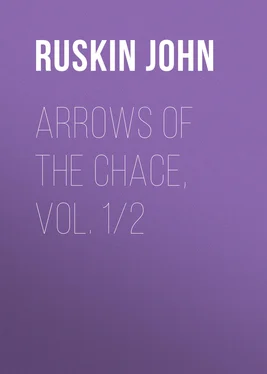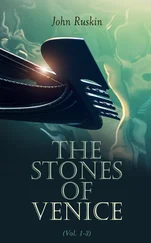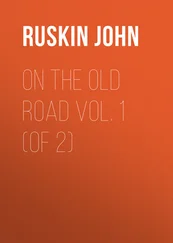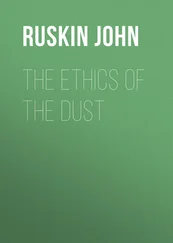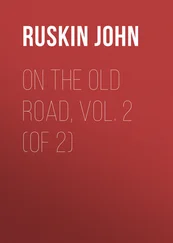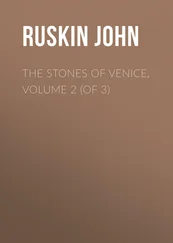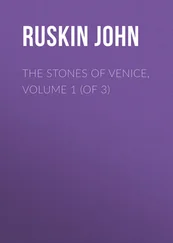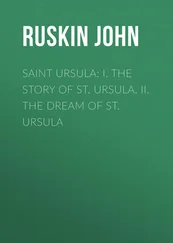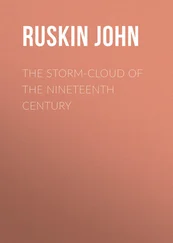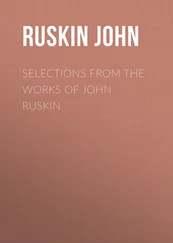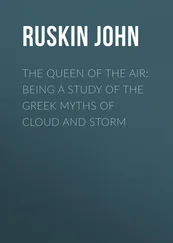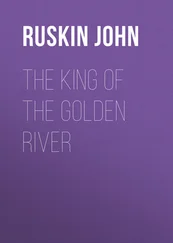John Ruskin - Arrows of the Chace, vol. 1/2
Здесь есть возможность читать онлайн «John Ruskin - Arrows of the Chace, vol. 1/2» — ознакомительный отрывок электронной книги совершенно бесплатно, а после прочтения отрывка купить полную версию. В некоторых случаях можно слушать аудио, скачать через торрент в формате fb2 и присутствует краткое содержание. Жанр: Биографии и Мемуары, literature_19, foreign_antique, на английском языке. Описание произведения, (предисловие) а так же отзывы посетителей доступны на портале библиотеки ЛибКат.
- Название:Arrows of the Chace, vol. 1/2
- Автор:
- Жанр:
- Год:неизвестен
- ISBN:нет данных
- Рейтинг книги:5 / 5. Голосов: 1
-
Избранное:Добавить в избранное
- Отзывы:
-
Ваша оценка:
- 100
- 1
- 2
- 3
- 4
- 5
Arrows of the Chace, vol. 1/2: краткое содержание, описание и аннотация
Предлагаем к чтению аннотацию, описание, краткое содержание или предисловие (зависит от того, что написал сам автор книги «Arrows of the Chace, vol. 1/2»). Если вы не нашли необходимую информацию о книге — напишите в комментариях, мы постараемся отыскать её.
Arrows of the Chace, vol. 1/2 — читать онлайн ознакомительный отрывок
Ниже представлен текст книги, разбитый по страницам. Система сохранения места последней прочитанной страницы, позволяет с удобством читать онлайн бесплатно книгу «Arrows of the Chace, vol. 1/2», без необходимости каждый раз заново искать на чём Вы остановились. Поставьте закладку, и сможете в любой момент перейти на страницу, на которой закончили чтение.
Интервал:
Закладка:
Your questions fall under two heads: (1) The range which an art examination can take; (2) The connection in which it should be placed with other examinations.
I think the art examination should have three objects:
(1) To put the happiness and knowledge which the study of art conveys within the conception of the youth, so that he may in after-life pursue them, if he has the gift.
(2) To enforce, as far as possible, such knowledge of art among those who are likely to become its patrons, or the guardian of its works, as may enable them, usefully to fulfil those duties.
(3) To distinguish pre-eminent gift for the production of works of art, so as to get hold of all the good artistical faculty born in the country, and leave no Giotto lost among hill-shepherds. 31 31 “Giotto passed the first ten years of his life, a shepherd-boy, among these hills (of Fiésole); was found by Cimabue, near his native village, drawing one of his sheep upon a smooth stone; was yielded up by his father, ‘a simple person, a laborer of the earth,’ to the guardianship of the painter, who, by his own work, had already made the streets of Florence ring with joy; attended him to Florence, and became his disciple.”—“Giotto and his Works in Padua,” by John Ruskin, 1854, p. 12.
In order to accomplish the first object, I think that, according to Mr. Acland’s proposal, preliminary knowledge of drawing and music should be asked for, in connection with writing and arithmetic; but not, in the preliminary examination, made to count towards distinction in other schools. I think drawing is a necessary means of the expression of certain facts of form and means of acquaintance with them, as arithmetic is the means of acquaintance with facts of number. I think the facts which an elementary knowledge of drawing enables a man to observe and note are often of as much importance to him as those which he can describe in words or calculate in numbers. And I think the cases in which mental deficiency would prevent the acquirement of a serviceable power of drawing would be found as rare as those in which no progress could be made in arithmetic. I would not desire this elementary knowledge to extend far, but the limits which I would propose are not here in question. While I feel the force of all the admirable observations of Mr. Hullah on the use of the study of music, I imagine that the cases of physical incapacity of distinguishing sounds would be too frequent to admit of musical knowledge being made a requirement ; I would ask for it, in Mr. Acland’s sense; but the drawing might, I think, be required, as arithmetic would be.
2. To accomplish the second object is the main difficulty. Touching which I venture positively to state:
First. That sound criticism of art is impossible to young men, for it consists principally, and in a far more exclusive sense than has yet been felt, in the recognition of the facts represented by the art. A great artist represents many and abstruse facts; it is necessary, in order to judge of his works, that all those facts should be experimentally (not by hearsay) known to the observer; whose recognition of them constitutes his approving judgment. A young man cannot know them.
Criticism of art by young men must, therefore, consist either in the more or less apt retailing and application of received opinions, or in a more or less immediate and dextrous use of the knowledge they already possess, so as to be able to assert of given works of art that they are true up to a certain point; the probability being then that they are true farther than the young man sees.
The first kind of criticism is, in general, useless, if not harmful; the second is that which the youths will employ who are capable of becoming critics in after years.
Secondly. All criticism of art, at whatever period of life, must be partial; warped more or less by the feelings of the person endeavoring to judge. Certain merits of art (as energy, for instance) are pleasant only to certain temperaments; and certain tendencies of art (as, for instance, to religious sentiment) can only be sympathized with by one order of minds. It is almost impossible to conceive of any mode of examination which would set the students on anything like equitable footing in such respects; but their sensibility to art may be generally tested.
Thirdly. The history of art, or the study, in your accurate words, “ about the subject,” is in no wise directly connected with the studies which promote or detect art-capacity or art-judgment. It is quite possible to acquire the most extensive and useful knowledge of the forms of art existing in different ages, and among different nations, without thereby acquiring any power whatsoever of determining respecting any of them (much less respecting a modern work of art) whether it is good or bad.
These three facts being so, we had perhaps best consider, first, what direction the art studies of the youth should take, as that will at once regulate the mode of examination.
First. He should be encouraged to carry forward the practical power of drawing he has acquired in the elementary school. This should be done chiefly by using that power as a help in other work: precision of touch should be cultivated by map-drawing in his geography class; taste in form by flower-drawing in the botanical schools; and bone and limb drawing in the physiological schools. His art, kept thus to practical service, will always be right as far as it goes; there will be no affectation or shallowness in it. The work of the drawing-master would be at first little more than the exhibition of the best means and enforcement of the most perfect results in the collateral studies of form.
Secondly. His critical power should be developed by the presence around him of the best models, into the excellence of which his knowledge permits him to enter . He should be encouraged, above all things, to form and express judgment of his own; not as if his judgment were of any importance as related to the excellence of the thing, but that both his master and he may know precisely in what state his mind is. He should be told of an Albert Dürer engraving, “That is good, whether you like it or not; but be sure to determine whether you do or do not, and why.” All formal expressions of reasons for opinion, such as a boy could catch up and repeat, should be withheld like poison; and all models which are too good for him should be kept out of his way. Contemplation of works of art without understanding them jades the faculties and enslaves the intelligence. A Rembrandt etching is a better example to a boy than a finished Titian, and a cast from a leaf than one of the Elgin marbles.
Thirdly. I would no more involve the art-schools in the study of the history of art than surgical schools in that of the history of surgery. But a general idea of the influence of art on the human mind ought to be given by the study of history in the historical schools; the effect of a picture, and power of a painter, being examined just as carefully (in relation to its extent) as the effect of a battle and the power of a general. History, in its full sense, involves subordinate knowledge of all that influences the acts of mankind; it has hardly yet been written at all, owing to the want of such subordinate knowledge in the historians; it has been confined either to the relation of events by eye-witnesses (the only valuable form of it), or the more or less ingenious collation of such-relations. And it is especially desirable to give history a more archæological range at this period, so that the class of manufactures produced by a city at a given date should be made of more importance in the student’s mind than the humors of the factions that governed, or details of the accidents that preserved it, because every day renders the destruction of historical memorials more complete in Europe owing to the total want of interest in them felt by its upper and middle classes.
Читать дальшеИнтервал:
Закладка:
Похожие книги на «Arrows of the Chace, vol. 1/2»
Представляем Вашему вниманию похожие книги на «Arrows of the Chace, vol. 1/2» списком для выбора. Мы отобрали схожую по названию и смыслу литературу в надежде предоставить читателям больше вариантов отыскать новые, интересные, ещё непрочитанные произведения.
Обсуждение, отзывы о книге «Arrows of the Chace, vol. 1/2» и просто собственные мнения читателей. Оставьте ваши комментарии, напишите, что Вы думаете о произведении, его смысле или главных героях. Укажите что конкретно понравилось, а что нет, и почему Вы так считаете.
